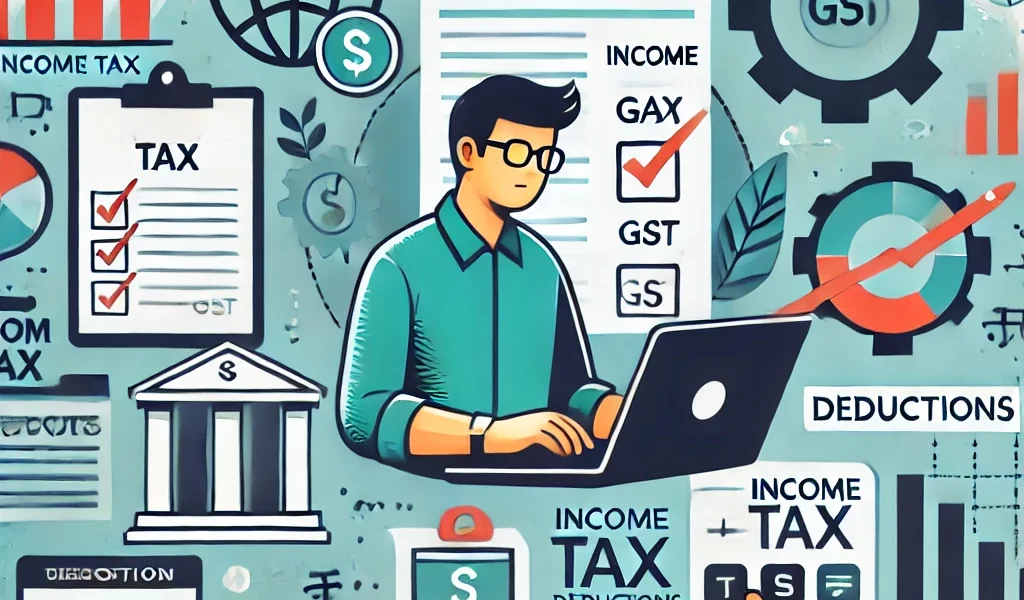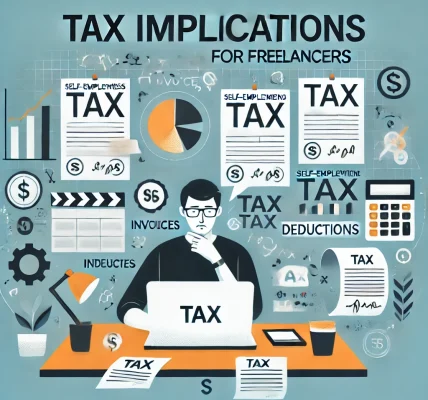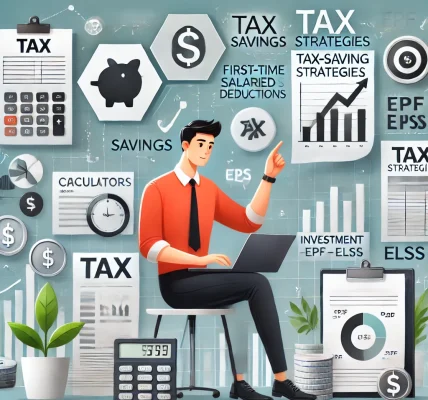Introduction
With the rise of the gig economy, freelancing has become a popular career choice in India. While freelancing offers flexibility and autonomy, it also brings financial responsibilities, including income tax compliance. Unlike salaried employees, freelancers and gig workers must manage their own tax planning, deductions, and filings.
This comprehensive DIY guide will help freelancers and gig workers understand income tax planning, optimize deductions, and stay compliant with tax regulations while legally minimizing their tax burden.
1. Understanding Freelance Income Taxation in India
Who is Considered a Freelancer?
A freelancer is anyone who earns income from independent work rather than a fixed salary. This includes professionals such as:
- Content writers
- Graphic designers
- Web developers
- Consultants
- Digital marketers
- Photographers
- Tutors
- Influencers
How is Freelance Income Taxed?
Freelance income falls under the “Profits and Gains from Business or Profession” category. This means freelancers are treated as self-employed individuals and are subject to the following tax rules:
- Tax is payable based on net income (total revenue minus allowable expenses).
- The tax rate depends on the applicable income tax slab.
- Freelancers can choose between the Presumptive Taxation Scheme (PTS) under Section 44ADA or the regular taxation method.
2. Income Tax Slabs for Freelancers (FY 2023-24)
Freelancers can opt for either the old tax regime (with deductions) or the new tax regime (lower tax rates, but no deductions).
| Annual Income | Old Regime Tax Rate | New Regime Tax Rate |
|---|---|---|
| Up to ₹2,50,000 | Nil | Nil |
| ₹2,50,001 – ₹5,00,000 | 5% | 5% |
| ₹5,00,001 – ₹7,50,000 | 20% | 10% |
| ₹7,50,001 – ₹10,00,000 | 20% | 15% |
| ₹10,00,001 – ₹12,50,000 | 30% | 20% |
| ₹12,50,001 – ₹15,00,000 | 30% | 25% |
| Above ₹15,00,000 | 30% | 30% |
3. Presumptive Taxation Scheme (Section 44ADA)
What is the Presumptive Taxation Scheme?
The Presumptive Taxation Scheme (PTS) under Section 44ADA is a simplified tax filing option for freelancers with annual turnover up to ₹50 lakh.
Benefits of Section 44ADA:
- Flat 50% deemed income: Only 50% of total income is considered taxable, and the remaining 50% is treated as expenses (without needing proof).
- No need for detailed expense records.
- No requirement to maintain books of accounts.
- Exempt from tax audit.
Who Should Choose Section 44ADA?
Freelancers with low expenses should opt for this scheme as it simplifies tax calculations and reduces paperwork.
4. Allowable Deductions for Freelancers
To legally reduce taxable income, freelancers can claim deductions under various sections:
1. Business Expenses (Section 37(1))
Freelancers can deduct expenses incurred exclusively for work purposes, such as:
- Rent for office or co-working space
- Internet and phone bills
- Software subscriptions (e.g., Adobe, Microsoft)
- Office supplies and stationery
- Advertising and marketing costs
- Professional fees (lawyers, accountants)
2. Depreciation on Assets (Section 32)
If you purchase expensive assets like laptops, cameras, or furniture, you can claim depreciation, reducing taxable income over time.
3. Home Office Deduction
If you work from home, a portion of rent, electricity, and internet bills can be claimed as business expenses.
4. Health Insurance (Section 80D)
- Up to ₹25,000 for self, spouse, and children.
- Additional ₹50,000 for senior citizen parents.
5. Retirement Savings (NPS – Section 80CCD(1B))
- Additional ₹50,000 deduction for contributions to the National Pension System (NPS).
6. Education Loan (Section 80E)
- Interest paid on an education loan can be claimed as a deduction for up to 8 years.
7. Donations to Charity (Section 80G)
- Donations to registered charities are eligible for 50% to 100% tax deduction.
5. GST for Freelancers
When Does a Freelancer Need to Register for GST?
- If annual income exceeds ₹20 lakh (₹10 lakh in special category states).
- If offering services to international clients (Export of Services).
Key GST Considerations:
- GST rate for most freelance services is 18%.
- Input Tax Credit (ITC) can be claimed for business expenses.
- Filing monthly or quarterly GST returns is mandatory if registered.
6. Advance Tax for Freelancers
What is Advance Tax?
Freelancers must pay taxes quarterly if total tax liability exceeds ₹10,000 per year.
Advance Tax Due Dates:
- June 15 – 15% of tax due
- September 15 – 45% of tax due
- December 15 – 75% of tax due
- March 15 – 100% of tax due
Failing to pay advance tax can result in penalties and interest charges under Section 234B and 234C.
7. How to File Income Tax Returns (ITR) for Freelancers
Which ITR Form Should Freelancers Use?
- ITR-3: For freelancers with detailed income-expenditure records.
- ITR-4: For those opting for Presumptive Taxation Scheme (44ADA).
Steps to File ITR:
- Calculate total income (Revenue – Expenses).
- Claim deductions (Health insurance, NPS, etc.).
- Compute tax liability (Based on applicable slabs).
- Pay self-assessment tax, if needed.
- File ITR using the Income Tax e-filing portal (www.incometax.gov.in).
Conclusion
Tax planning is crucial for freelancers and gig workers to ensure compliance and maximize savings. By utilizing deductions, opting for Section 44ADA, maintaining proper records, and paying advance tax on time, freelancers can legally minimize tax liabilities while growing their income.
Before making tax decisions, consulting a chartered accountant (CA) or tax expert is advisable to ensure full legal compliance.




